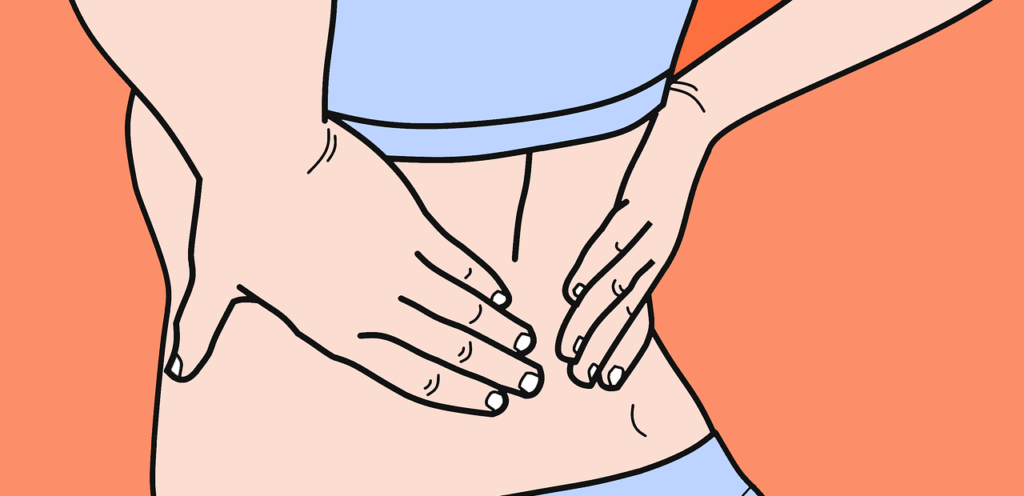“It’s completely normal to feel a little sore after your first adjustment.”
New patients are often concerned about mild soreness after their first adjustment when seeing their chiropractor. As with any effective healing modality in any profession, chiropractic care can result in some soreness that accompanies the increase in function. As your body heals itself and as we add mobility to parts that have been “stuck” there may be some mild soreness in the first few hours after the adjustment. It’s a bit like pulling a splinter out. Naturally there’s still pain afterward, but it’s a healing soreness. This feeling of being sore after an adjustment is not something to worry about. It’s completely normal and should dissipate after 24 hours. Most people don’t mind because this type of soreness feels like a positive change. There is noticeable change in the level of mobility or a reduction in the initial pain after a good adjustment. Occasionally, however, people sometimes feel alarmed by this. It’s similar to the feeling you get after working out for the first time in a long while–your muscles are sore, but it’s a good sore. It means you’re on the path to improvement.
So What Is Happening?
Getting a neck and back adjustment means getting some movement in your spine that hasn’t been there in a while. An adjustment is a hands-on physical procedure. We use our deep anatomical, physiological, and rehab training and decades of experience to pinpoint a specific neuro-musculoskeletal area where a dysfunction is occurring. Parts aren’t moving as they should.
The chiropractic adjustment can concern some patients because the motion can by necessity be firm. Also, the “cracking” sound you may hear can be a bit jarring if it’s your first time getting an adjustment. The truth is the amount of pressure we apply to any given area along your neck and back is far more gentle than you may be perceiving. Regardless, after your first session it is still natural to feel sore after an adjustment, particularly in the mid-back and shoulders.
When your joints move better, they send signals to the muscles that surround the joint to contract and control movement the natural way that they are designed to move. Naturally, muscles go from tight and guarded to relaxed. Just like with exercising, continuing the path and following through with a treatment plan custom made to your specific injury or dysfunction helps to re-establish normal movement patterns.
Your chiropractic adjustments trigger a couple of reflexes. First, there’s a reflex for pain relief when the joints move better. Secondly, there is a reflex that helps reset muscle tone. The muscles are more relaxed around the area the chiropractor has worked on. The pain relief and added mobility/movement that our patients experience with care are evidence of these reflexes.
What Can I Do About Soreness after an Adjustment?
The simple truth is if the pain is mild and isn’t reducing your motion, you simply shouldn’t worry. That’s the first step. The second step is to use an ice pack on the sore area to help reduce the soreness quickly. We personally use Biofreeze in the office which often helps reduce soreness. If the pain continues, changes, or intensifies past 24 hours you should contact your chiropractor. You can speak with your chiropractic doctor to ensure that everything is functioning and to see if you need further care.
What If It’s Something More?
If the pain is more severe than simply being sore after an adjustment, our advice is that you contact your chiropractor. There are always possible side effects to any treatment, chemical or physical. It might be that your chiropractor needs to explain to you in more depth what your diagnosis is, and he may need to explain the mechanics of the problem. In other cases, your chiropractor might have missed something along the way, and you’ll need to peel away more layers to your condition. Again, these situations are extremely rare. However, you should always listen to your body. If it is telling you something might be wrong, communication is key to getting you happy and healthy.
What Does the Research Say about Side Effects with Chiropractic Care?
Research demonstrates great outcomes and excellent patient satisfaction with chiropractic care. Chiropractic care has been shown to be an economically useful method of treatment. Serious accidents are extremely rare. A large study of Norwegian chiropractors looking at over 1000 patients and 4700 visits documented the occurrence of daily soreness reactions to chiropractic care. A follow up study was performed in Sweden to study about 600 patients and almost 2000 visits. No serious injuries were reported in either study. They found that almost half of all new patients experience soreness to some degree, usually mild, and usually very short lived.
Research Results Show Soreness; Improved Soon After
There were three distinct types of side effects for both groups:
- 67% of reported side effects were in the same area of treatment. Sore neck with a neck adjustment. Sore back with a back adjustment.
- 10% of reported side effects were outside of the treatment area. If they receive a neck adjustment they would feel pain in the low back, for example. In addition, they might experience a headache.
- Less than 5% experienced nausea, dizziness, or “other”. Additionally, “Other” describes rare examples such as painful feet, cramping in feet, pulling sensation in arms or legs, trembling sensation in the groin, rumbling in the stomach, pressure in head, and difficulty falling asleep.
Almost all reactions arose in a day or two after treatment and most disappeared after 2 days. Most reactions were light or moderate and had little effect on daily activities. Reactions to chiropractic treatment was usually after the first visit only.
Source: Leboeuf-Yde, Charlotte & Hennius, Bjorn & Rudberg, E & Leufvenmark, PTM & Thunman, M. (1997). Side effects of chiropractic treatment: A prospective study. Journal of manipulative and physiological therapeutics. 20. 511-5.
I hope this explains some of the effects from treatment that you are feeling, and helps calm any worries you could potentially have. To reiterate, it is completely normal to feel a bit sore after an adjustment. If there is significant pain felt you should absolutely always inform our doctors. We’ll be happy to speak with you regarding your care or help you book an appointment if necessary. You can reach out to us at info@rinconchiro.com or call us at (415) 896-2225.
Dr. Todd Lloyd, DC



